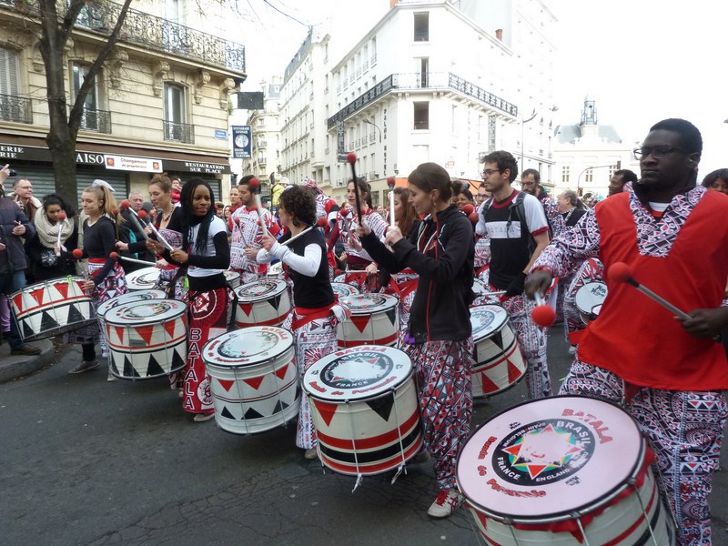The Paris Carnival is one of the oldest Carnival celebrations in Europe. The first written mention of a Carnival celebration in Paris was laid down by the clerk of the Parlement of Paris (a provincial appellate court) and chronicler Nicolas de Baye in 1411.
The working class played a central role in the celebrations, which used to begin the day after the Epiphany and last until Lent. Workers, traders and students formed festive and carnival societies, similar to krewes of the New Orleans Mardi Gras or the mystic societies in Mobile, that were essential to the festivities. However, other social classes participated in the festivities as well.
The Carnival of Paris went on a hiatus in 1952. For more than four decades, there were no Mardi Gras celebrations in Paris, and Parisians who wanted to participate in the festivities had to travel to Nice or another French city known for its Carnival celebrations. The modern-day Paris Carnival was revived in 1997 as a one-day event held before Lent. Even today, some Parisians are unaware of its existence.
The highlight of the Paris Carnival is the colorful parade held on Fat Tuesday. It begins at the Place Gambetta (Gambetta Square) and ends at the Place de la République (Republic Square), culminating in a big street party. The procession is made up of several groups of revelers in extravagant outfits, who dance, sing, play drums and whistles. The Carnival parade draws tens of thousands of Parisians and visitors.
Each year, the Mardi Gras parade in Paris has a different theme assigned by the Carnival committee. Past themes have included Fairies, Trolls and Co; Chevaliers, Dragons and Ladies of the Castle; The Fantastic Water World; and The Dance of Fruit and Vegetables Around the World.

Photo: WOYALEX




